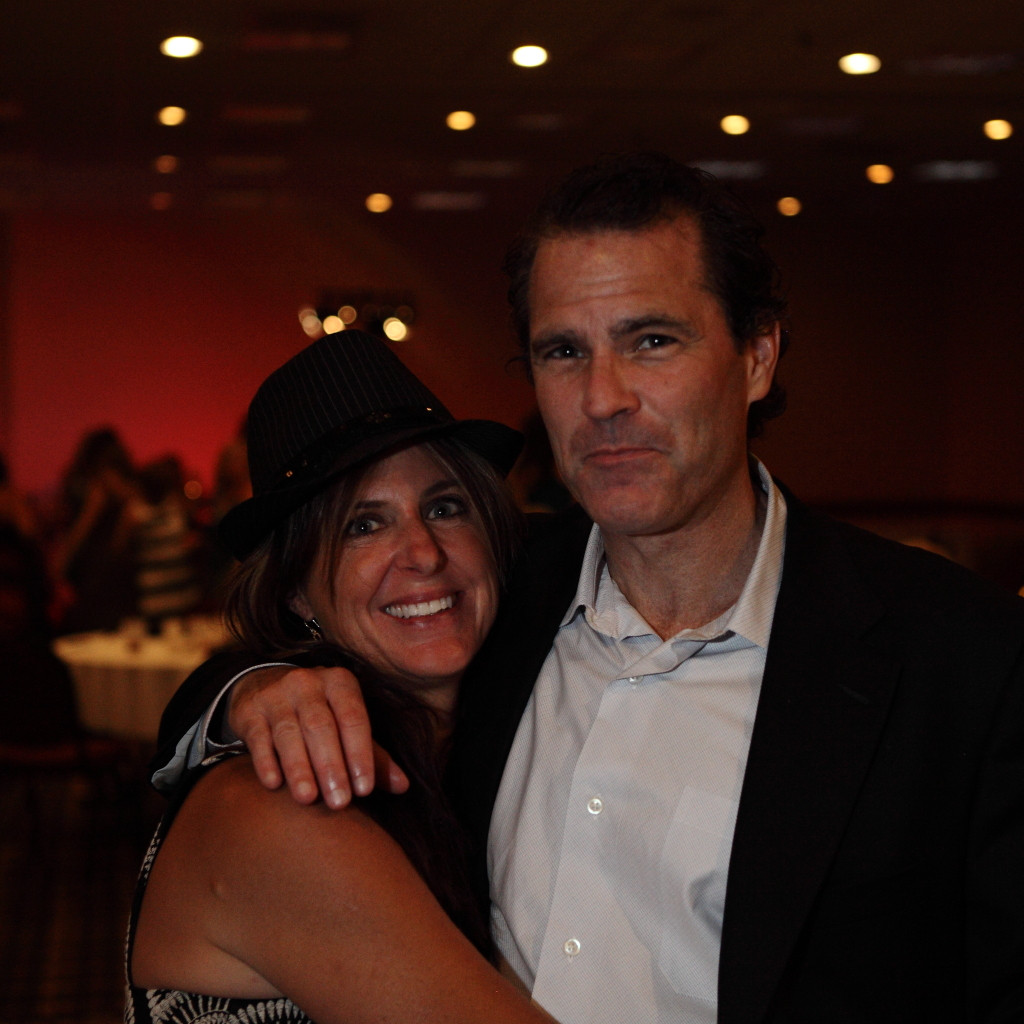I would certainly say that it appears to be dark in that restaurant. I would highly recommend a flash unless you are using a very high end camera (and even then it would be a good idea.)
You aren't going to have much luck bouncing off the ceiling since the ceiling appears quite dark, so you'll need to use either diffusers, reflectors or soft boxes on the flash to prevent harsh shadows. I don't think gelling the flash should be necessary as the light appears to be incandescent rather than florescent. Michael Clark pointed out that an orange gel might be helpful to match the background lighting.
The focal length needed depends on what sensor size you are shooting on. For full frame, covering the 24 to 70mm range should work pretty well. If there are any presentations during which people will be seated, a good telephoto would also be a plus to have. If you are shooting on APS-C, adjust accordingly based on crop factor.
As far as deciding how far to shoot from, there are a few different philosophies. You don't want people's back's blocking the shot, but if you can get the shot from a distance, then you will be less obvious and in the way.
Play around with the flash power to get a good balance between room lighting and fill lighting too. The best balance point is going to depend largely on the capability of your camera, but I'd try to shoot with the room lighting having the most impact on the feel of the photos I could since it looks like an interestingly (if dimly) lit place. You want the flash to fill in the faces, not overwhelm the existing lighting, unless you can't get a sufficient exposure without using the flash as the majority of the lighting.
Other little things, be sure to bring extra batteries and have a comfortable camera strap. A decent monopod would also be a decent investment. Wear comfortable shoes with good support. You'll be on your feet a lot and holding the camera a lot. Depending on the size of your camera, it can take a toll after a while if you aren't prepared for it.



